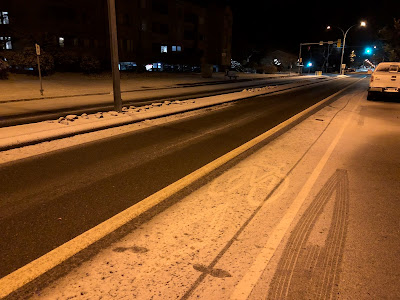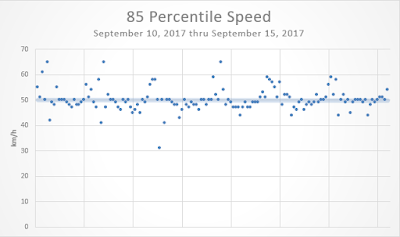Sarah Ross, who is the Director of System Planning for TransLink, gave a presentation to Langley City council on Monday night about upcoming changes to transit service along Fraser Highway. As part of the Mayors’ Council’s 10-Year Vision for Transportation in our region, 11 new B-Line routes will be rolled out throughout the region.
Fraser Highway will see B-Line service introduced between Surrey Central and Langley Centre in 2019. Ross explained what this would mean for residents along the corridor.
Currently, the 502 and 503 provide primary bus service between the SkyTrain network and Langley City. The 502 is a local service along Fraser Highway which comes every 5 minutes during peak hours, 15 minutes outside of peak hours, and 30 minutes in the night and into the early morning.
The 503 provides express service along Fraser Highway between the SkyTrain network and Langley City, with local service to Aldergrove. This bus run every 30 minutes.
Because the 502 is a local service, and due to the extreme congestion along Fraser Highway, the total travel time between Surrey Central and Langley Centre is between 45 minutes and 60 minutes today. The 503 is an express service with a travel time between Surrey Central and Langley Centre of between 28 and 51 minutes depending on congestion.
Ross explained that the total travel time on the new B-Line between Surrey Central and Langley Centre will be around 40 minutes, and will stop as shown.
 |
| Proposed Fraser Highway B-Line stops. Select slide to enlarge. |
From a customer perspective, this will provide faster access for more people along the Fraser Highway corridor. The new B-Line service will run every 8 to 10 minutes until 9pm. This will provide more frequent off-peak transit service than today. The new B-Line service will use bigger buses which will result in less crowded buses along this corridor.
There will be some changes that will impact customers negatively. The 502 service frequency will be reduced to 15 minutes between start of service and 9pm, with 30 to 60 minute service at night.
The biggest change will be to the 503 which provides service to Aldergrove. Ross stated that 20% of 503 customers travel beyond Langley Centre. TransLink is planning to discontinue express travel between the SkyTrain and Langley Centre, converting the 503 back into a local service along the whole corridor. This means that Aldergrove customers will have two choices: endure a longer commute between the SkyTrain and Aldergrove on the 503, or take the new B-Line between the SkyTrain and Langley Centre, then transfer to the 503 in Langley.
As I stated earlier, travel times along Fraser Highway vary significantly due to congestion. The following map shows average speeds. TransLink will be working with both Langley City and Surrey to implement transit priority measures to reduce this variability. The section of Fraser Highway through Green Timbers experiences the most severe congestion; it can be faster to walk. I hope that Surrey and TransLink are able to get buses moving faster along that section of Fraser Highway.
 |
| Speed & Reliability along the Fraser Highway Corridor. Select slide to enlarge. |
Ross stated that TransLink, in partnership with municipalities, will ensure that all B-Line stops have proper bus shelters. TransLink is also working to provide real-time next bus displays at these stops.
In the longer-term, Ross said that TransLink will be exploring installing other amenities at stops such as off-board fare payment.
TransLink will be seeking public feedback about these service changes along Fraser Highway over the next few months.




























